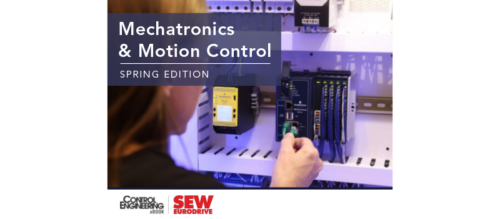Sensorless control for energy-saving motors in washing machines
International Rectifier Corp. (IR) recently introduced a sensorless control platform for direct-drive Permanent Magnet Synchronous Motor (PMSM) washing machines. The platform features an embedded field-oriented control (FOC) algorithm for high-dynamic torque control that improves washing cycles—consuming less hot water to reportedly save up to 70% of energy usage.
International Rectifier’s new iMotion washer platform is now available for sampling. IRMCS3041 reference design is priced at $995 in single-unit quantities.
This latest addition to IR’s iMotion family combines a mixed-signal controller, intelligent power modules, algorithms, development software, and design tools. Integrated iMotion for washers simplifies design of variable-speed motor control for horizontal- and vertical-axis washing machines, with faster time-to-market and less system cost, says IR.
Using direct-drive PMS motors in washing machines improves system dynamics and reduces overall system cost due to a simpler mechanical structure. iMotion platform enables sensorless sinusoidal current control, eliminating costly and complex Hall-effect sensors, while delivering smooth torque over an extended speed range, explains David Tam, vice president of International Rectifier’s Energy-Saving Products Segment. “The bottom line is that the iMotion approach should accelerate deployment of energy-efficient motors, helping us to save a great deal of electricity,” he says.
Analog and digital control
Heart of the platform is IR’s high-performance IRMCF341 washer control. This integrated circuit (IC) incorporates all control/analog interface functions needed for sensorless speed control of PMS motors. The control method relies on making precise dc link current measurements. The IC’s digital control features the company’s patented Motion Control Engine (MCE) that eliminates software coding from the motion control algorithm development process.
Also integrated into the platform is a 60-MIPS, 8-bit, 8051 microcontroller (MCU), which enables application layer software development. The MCU operates virtually independently of the Motion Control Engine, without competing for system resources—for example, interrupts or internal registers—explains IR. Moreover, the MCU streamlines application software debugging. IRMCF341 control IC comes in a 64-pin QFP (quad flat pack) format, supplying all analog inputs and PWM outputs needed to control the washing-machine motor. In addition, inverter power modules (IRAMS06UP60B and IRAMS10UP60B) are part of the control platform. They feature an advanced high-voltage gate drive IC for three-phase inverter control and include the dc link shunt used for motor current measurement and power module protection.
A reference design (IRMCS3041) and software design tools complete the platform. Tools include communications software that runs on the 8051 MCU, providing PC-based MCEDesigner software access to control parameters and system variables residing in shared memory. This allows changing of controller setpoints and control-loop gains and other inputs without the need to modify or compile software, says IR. “MCEDesigner tools generate wash-cycle profiles and plot motor speed and current, thereby accelerating rapid evaluation of direct-drive motor performance with real washing loads.”
Frank J. Bartos , executive editor
Do you have experience and expertise with the topics mentioned in this content? You should consider contributing to our CFE Media editorial team and getting the recognition you and your company deserve. Click here to start this process.


